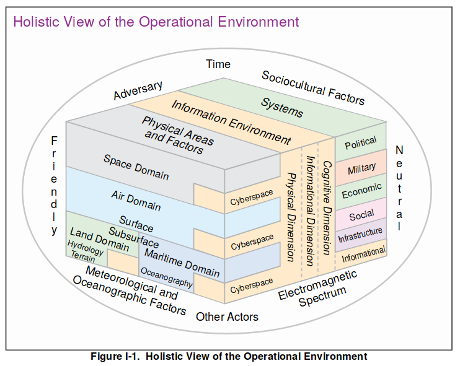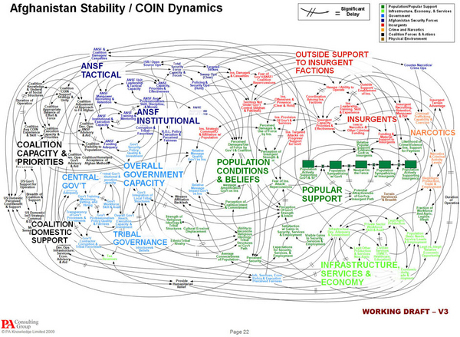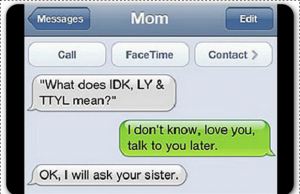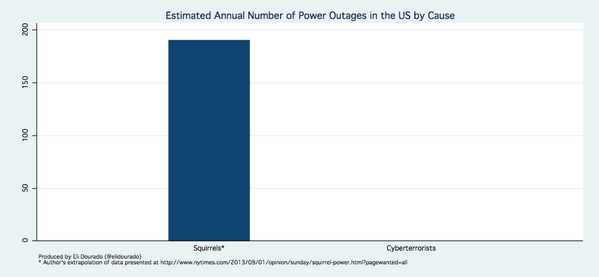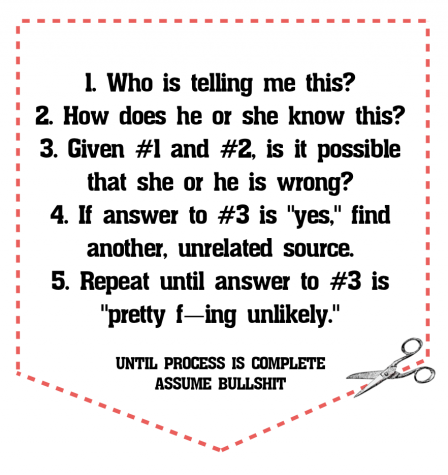Accidental vs Deliberate Context by Jessica Kerr.
From the post:
In all decisions, we bring our context with us. Layers of context, from what we read about that morning to who our heroes were growing up. We don’t realize how much context we assume in our communications, and in our code.
One time I taught someone how to make the Baby Vampire face. It involves poking out both corners of my lower lip, so they stick up like poky gums. Very silly. To my surprise, the person couldn’t do it. They could only poke one side of the lower lip out at a time.

Turns out, few outside my family can make this face. My mom can do it, my sister can do it, my daughters can do it – so it came as a complete surprise to me when someone couldn’t. There is a lip-flexibility that’s part of my context, always has been, and I didn’t even realize it.
…
Jessica goes on to illustrate that communication depends upon the existence of some degree of shared context and that additional context can be explained to others, as on a team.
She distinguishes between “incidental” shared contexts and “deliberate” shared contexts. Incidental contexts arising from family or long association with friends. Common/shared experiences form an incidental context.
Deliberate contexts, on the other hand, are the intentional melding of a variety of contexts, in her examples, the contexts of biologists and programmers. Who at the outset, lacked a common context in which to communicate.
Forming teams with diverse backgrounds is a way to create a “deliberate” context, but my question would be how to preserve that “deliberate” context for others? It becomes an “incidental” context if others must join the team in order to absorb the previously “deliberate” context. If that is a requirement, then others will not be able to benefit from deliberately created contexts in which they did not participate.
If the process and decisions made in forming a “deliberate” context were captured by a topic map, then others could apply this “new” deliberate context to develop other “deliberate” contexts. Perhaps some of the decisions or mappings made would not suit another “deliberate” context but perhaps some would. And perhaps other “deliberate” contexts would evolve beyond the end of their inputs.
The point being that unless these “deliberate” contexts are captured, to whatever degree of granularity is desired, every “deliberate” context for say biologists and programmers is starting off at ground zero. Have you ever heard of a chemistry experiment starting off by recreating the periodic table? I haven’t. Perhaps we should abandon that model in the building of “deliberate” contexts as well.
Not to mention that re-usable “deliberate” contexts might enable greater diversity in teams.
Topic maps anyone?
PS: I suggest topic maps to capture “deliberate” context because topic maps are not constrained by logic. You can capture any subject and any relationship between subjects, logical or not. For example, a user of a modern dictionary, which lists words in alphabetical order, would be quite surprised if given a dictionary of Biblical Hebrew and asked to find a word (assuming they know the alphabet). The most common dictionaries of Biblical Hebrew list words by their roots and not as they appear to the common reader. There are arguments to be made for each arrangement but neither one is a “logical” answer.
The arrangement of dictionaries is another example of differing contexts. With a topic map I can offer a reader whichever Biblical Hebrew dictionary is desired, with only one text underlying both displays. As opposed to the printed version which can offer only one context or another.
